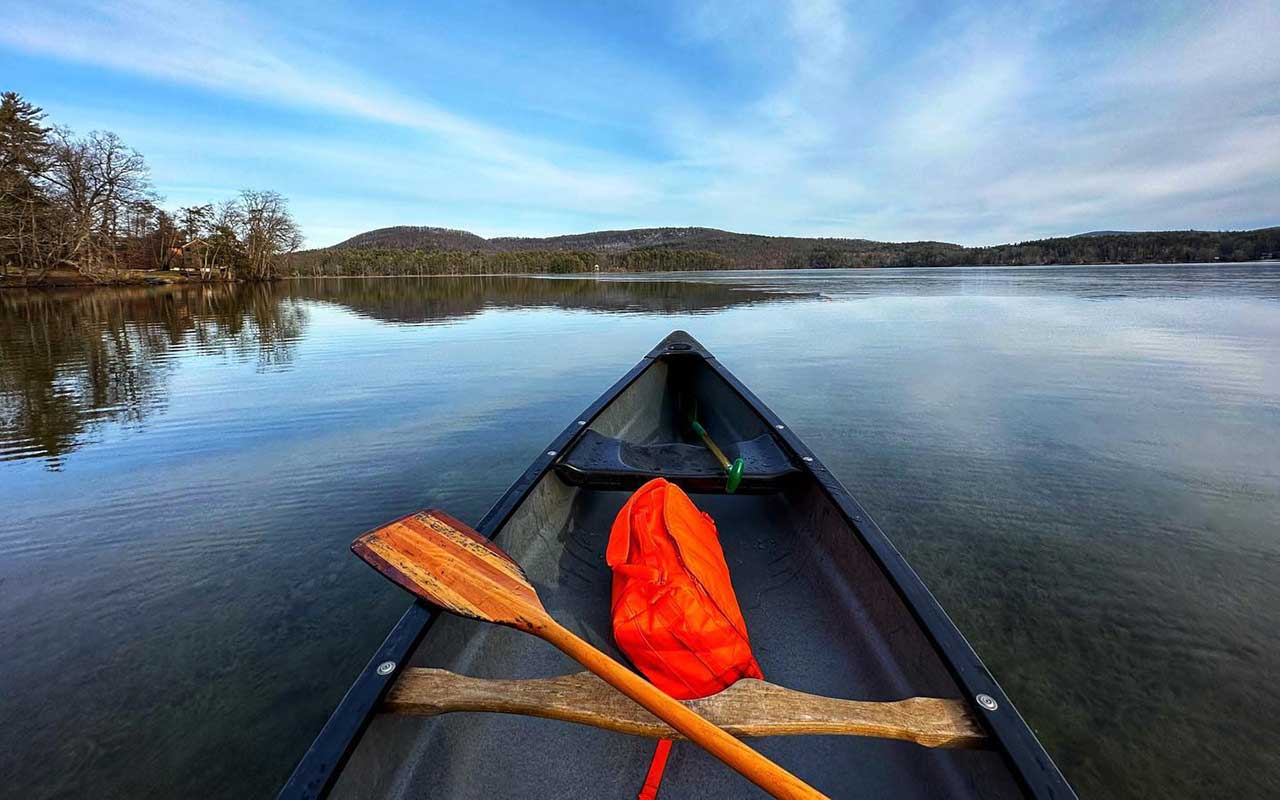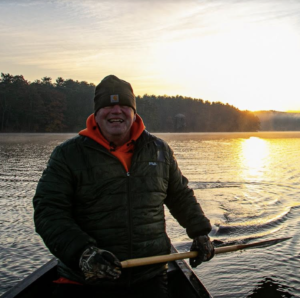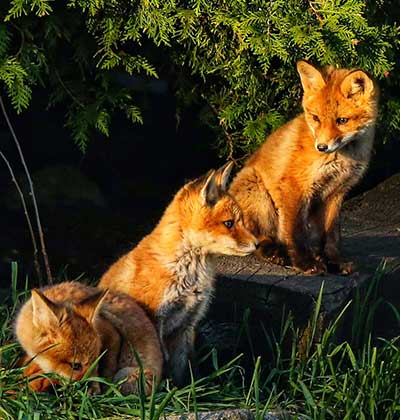Featured Artist

John Harney Keeps It Simple

The first thing John Harney said to me when I arrived at Provisions for our interview was, “I want you to know that I’m an amateur and there are much better photographers than me.” He then insisted on paying for my coffee, and after warmly greeting the numerous patrons who recognized him, we sat down to chat.
Many of us know the Harney name, whether it be from Harney Tea, Harney Real Estate, or the Oakhurst Diner, the Harneys are certainly a well-known and beloved family in this community. What I did not know, however, is that in addition to his photography and real estate ventures, John Harney was also a social worker and is deeply committed to the Salisbury Affordable Housing Trust as well as the Salisbury Inlands Wetlands and Watercourse Commission.
John Harney Jr. was born in Ithaca, NY, on April 21, 1954. His father had attended Cornell Hospitality School and shortly after John Jr. was born, the family settled first in West Cornwall and then in Salisbury. For many years, John Sr., along with Reese Harris and Donald Warner, owned and managed The White Hart. Harney says that he grew up at the White Hart and jokes that he along with his siblings formed the workforce for their parents. He says that now when he goes there he’s always nervous they might put him back to work.
 Love, naturally
Love, naturally
Harney gained his love of nature through two essential adults. The first was George Kiefer. Harney, along with many other kids, worked for Kiefer harvesting Christmas trees, cutting firewood, and gathering sap for maple syrup. Kiefer was a forester and had extensive knowledge of the woods. He passed on his love for nature to generations of Salisbury youth. Harney remembers Kiefer taking him and his friends cross-country skiing, hiking, and camping. He taught them how to survive in the woods and always took the time to stop and point out things that they may not have noticed, such as hawks and osprey. Kiefer taught them to be aware of their surroundings and “truly present” to them.
The other adult was Skeet Morey. When Morey wasn’t at the post office he was up on Mt. Riga, in a stream fishing for trout, trapping, or hunting. Harney says Morey knew more about animals than the animals knew about themselves. He was one of the best hunters, trappers, and fishermen around. He also knew Mt. Riga like the back of his hand and often took young kids under his wing and taught them to hunt game and fish.
An honorable life
Harney attributes his nature photography to an outgrowth of all the hunting and trapping skills he learned from Kiefer and Morey. To be successful, you have to know the behavior of wildlife to get close enough to capture the picture, but with photography nothing is harmed.
Harney attended Salisbury Boys School where he was instilled with a sense of social responsibility, reinforced by his parents. The students were given the message that since they had been given many benefits in life, much would be expected of them. Harney says his father set the example of living an honorable life filled with hard work and compassion for others.
At Williams College, Harney studied religion and discovered his love for Joseph Campbell. Campbell’s philosophy that “the goal of life is to make your heartbeat match the beat of the universe, to match your nature with Nature” resonated. Harney considers it quite simple, “If you want to photograph a blue heron catching a fish, then you have to take the time to be quiet and wait for it. You must unhinge yourself from normal life, get into the pattern of nature itself, and be patient, like meditation.”
After Williams College, Harney went into the Marine Corps for two years and then moved to Denver for a job with an oil company. After some time, Harney decided he wasn’t particularly impressed with “sheer capitalism” and left to work at a homeless shelter serving 300 people a night. For seven years, he spent most of his time out on the streets of Denver doing social work, asking people to come in off the streets, trying to help stabilize lives, and “all of the things you get involved with on a very personal level when people are in crisis.” He loved the work and says he felt more at home there than he felt in most places.
Next Harney took a position working with at-risk youth on Indian reservations throughout the Dakotas, Montana, and Colorado. The goal was to connect the kids with education, jobs, and training and to develop a mentorship support system in the community outside the reservation so that they didn’t have to navigate life alone. Harney recalls, “The poverty is so extreme, you don’t even know you’re in America. Off the reservation they deal with hurdles that most people don’t have to, and the discrimination made it very difficult to survive. The cycle of poverty and inequity is difficult to overcome, and people often turn to drugs and alcohol because there is no end game.”
Coming home
In 1999, married and with three children, Harney wanted to find a better place for his family, and remembering his own childhood, decided to return to Salisbury. His mother Elyse Harney offered him a real estate position and eventually he formed his own company, which merged with William Pitt Sotheby’s International Realty in 2008. Harney is also very devoted to his work with the Salisbury Housing Trust, which raises money to build and renovate affordable housing for local families. He says, “If we can’t raise enough money from the community for the house, we have to take it from the Trust’s reserves. It’s definitely not ideal to fund it this way, but you have to finish the house for the family; you just have to.”
How did you first get interested in and when did you begin taking photographs of nature?
When I went to train for a biathlon (cross-country skiing and rifle marksmanship) in Alaska in the early 1970s, there was a program to bring kids to Fort Richardson to train them for the sport, and I was lucky enough to be chosen. It was a wildlife paradise. They had a big photography center with dark rooms and the whole set up. That’s where I started. In Alaska the beauty is all around you. My interest in the sport of biathlon culminated in making the US national team in 1979-1980.
Do you have any formal photography training?
No, and the beauty of it is you don’t need to. You just have to be aware. All you have to do is start to look around you. The beauty of nature is ever present, but usually we are just too busy to look at it. My photography begins and ends with being observant of what surrounds us. It helps me to focus, to slow down, and to be patient. Nature moves at a completely different pace from what we are running around in.
What details do you enjoy focusing on in your work?
I’ve become fascinated with focusing on the actual eyes of the wildlife. They just seem like a window. My intention is to capture a photo of the animal and have clarity with their eyes as they observe their world. I spend a lot of time waiting, for example drifting in a canoe to get close to a cormorant. Who would know that it has green eyes – you would never know because they don’t usually let you get up close. When you can look into an animal’s eyes, you end up with more understanding.
What professional photographers have influenced your work?
Randy O’Rourke, a professional photographer in Kent and one of my best friends. We go on weekly hiking or canoeing trips every Sunday before dawn. Currently we are trying to find a moose to observe and photograph, but the moose are proving to be elusive. Randy has passed a lot of wildlife and landscape photography knowledge on to me. He taught me the importance of light and that I have to become a master of the single shot before getting a motor drive.
In what way has your photography evolved over the years?
I’ve changed to more of a focus on observing the individual animal and learning its specific habits. Over time I’ve learned to sit quietly and just observe; it takes unbelievable patience. If you can get close enough without disturbing the animal, you are exposed to a part of their life that is private and usually never disclosed to the rest of us. There is a little bit of magic there.
I learned from Randy that it is all about the light. Nothing else matters. There are only two parts of the day in photography, before dawn and dawn, and sunset and right after sunset. Both times provide a brilliant slanting light where everything comes alive. You have to get out at those times. Many times you see nothing. But one time Randy and I were sitting in a canoe and three otters appeared – it was like being invited to a private party. The otters hung out with us, preened each other, chattered, swam and hunted for fish – there was a lot of commotion when one of them came up with a fish. Then a beaver came up and started sunning itself on a log next to the canoe. At that point I looked at Randy and said, “Either we are channeling St. Francis, or we are dead and truly one with nature.”
How have nature and photography played a part in shaping the person you are today?
Everything I am is shaped by nature and photography. They force me to stop and observe, focus on the details of nature, and think about how to frame it. It has sharpened my sense of awareness of light and what is happening around me. Even if I am with a client showing houses and I see something wonderful, I will stop the car and run.
Are there any locations you return to repeatedly?
Twin Lakes. The lakes are just beautiful, and for three quarters of the year hardly anyone is up there. It’s busier in the summer, but even then no one is out there before dawn except for some fishermen. It’s a quiet place filled with wildlife, and you see remarkable things. I also do a lot of exploring the lakes and ponds in Norfolk and up into Massachusetts. I consistently hike off trails because if you are on a trail, then you are on some else’s path. I get lost all the time, sometimes with a canoe on my back!
Which image are you most proud of and why?
The kit foxes. I love those three foxes, I love the different attitudes – each fox is doing its own thing, completely unaware that I am there [see photo previous page]. If you can establish a relationship where either they are unaware of your presence or they allow you to be part of their life, then you see something you wouldn’t normally.
How important do you believe it is for a landscape photographer to love the outdoors, not just the results?
There can’t be one without the other. If you see yourself as separate from nature, you have lost the point. It goes back to Joseph Campbell’s philosophy – everything is one. How can you photograph something so beautiful as landscape or wildlife and not become intimately attached in some way?
Can you comment on landscape photography and its influence on environmental conservation?
With landscape photography, if you can translate to others the beauty and fragileness of nature, it might also help efforts to conserve what you are photographing. It just has to.
What advice would you give to someone who’s just getting started with nature photography?
You just have to get out of your car, get out of the house, get out from behind your computer. start doing walkabouts, and engage with nature on its own terms. All it is is observing and being present. Pretty simple! •
To learn more about John Harney and his photography, you can find him on Facebook or email him at jharney@wpsir.com.

